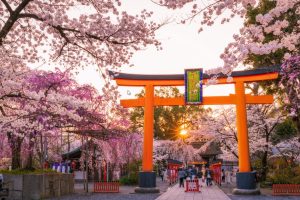
Trieste, Italy: The Hidden Gem Between the Sea and the Hills
Introduction: Italy’s Overlooked Coastal Beauty
When people think of Italy, they imagine Rome’s Colosseum, Venice’s canals, or Florence’s art-filled streets. But hidden on the northeastern edge of the country, where Italy meets Slovenia and the Adriatic Sea, lies a place that feels like a different world altogether — Trieste.
This charming port city, cradled between the sparkling blue Adriatic and the green slopes of the Carso hills, is a unique blend of Italian passion, Austro-Hungarian elegance, and Slavic soul.
Trieste isn’t your typical Italian destination. It’s not packed with tourists or selfie sticks, and that’s exactly what makes it special. Here, you’ll find historic cafés where time stands still, neoclassical buildings glowing under the sunset, and sea breezes that carry whispers of centuries past.
This is a city for thinkers, wanderers, and those who prefer their adventures slow and soulful. In this ultimate guide, we’ll take you through everything you need to know about Trieste — what to see, where to eat, when to visit, and why this underrated city deserves a spot on your travel bucket list.
Chapter 1: A City Shaped by Empires
Trieste’s story is as fascinating as its landscape. For centuries, it was the main seaport of the Austro-Hungarian Empire, giving it a cosmopolitan flavor unlike anywhere else in Italy.
Walking through the streets, you can feel the city’s layered history. The Austrian architecture stands proudly next to Italian piazzas and Slavic touches, creating a cultural cocktail that’s as diverse as it is beautiful.
In the early 1900s, Trieste was one of the richest cities in Europe — a hub for trade, literature, and coffee (yes, coffee!). Writers like James Joyce lived here, and the city’s bohemian spirit still lingers in its cobblestone alleys and timeless cafés.
But even before the empire, Trieste’s roots go way back. The Romans called it Tergeste, and traces of the ancient city can still be seen today in the Roman Theatre near the city center.
Chapter 2: The Charm of Piazza Unità d’Italia
Every great Italian city has a main square, and Trieste’s Piazza Unità d’Italia is arguably one of the most stunning in the country.
Facing directly onto the Adriatic Sea, it’s the largest seafront square in Europe — a breathtaking space framed by elegant 19th-century palaces, open-air cafés, and a view that stretches to infinity.
By day, it’s alive with locals sipping espresso, chatting in multiple languages, and enjoying the sunshine. By night, the square transforms into something magical — the buildings light up, music echoes from nearby restaurants, and the sea breeze carries a romantic hush.
If there’s one spot that captures the spirit of Trieste, it’s this square. It’s grand yet intimate, historic yet alive, and always filled with stories.
Chapter 3: Castles and Cliffs — A Royal Escape
No trip to Trieste is complete without visiting Miramare Castle — a white fairytale-like fortress perched on a cliff overlooking the sea.
Built in the mid-1800s for Archduke Ferdinand Maximilian of Austria and his wife Charlotte of Belgium, this castle tells a tale of love, ambition, and tragedy. The architecture blends Gothic and Renaissance styles, surrounded by lush gardens that roll down to the water’s edge.
You can stroll through the romantic park, visit the royal chambers, and gaze out over the shimmering Adriatic. Every corner whispers history, and the panoramic views are nothing short of cinematic.
A bit further up in the hills, you’ll find San Giusto Castle, another historic fortress offering incredible views of the city and the sea. Together, these castles showcase the duality of Trieste — one royal and elegant, the other ancient and rugged.
Chapter 4: The Coffee Capital of Italy
Did you know Trieste is often called Italy’s coffee capital?
While cities like Naples or Milan may boast about their espresso, Trieste has been the heart of Italy’s coffee trade for centuries. The port made it a key entry point for coffee beans from around the world, and the city developed its own rich coffee culture that still thrives today.
You’ll find iconic historic cafés like:
☕ Caffè San Marco — a literary café where James Joyce once wrote.
☕ Caffè degli Specchi — overlooking Piazza Unità, a true symbol of Trieste’s golden age.
☕ Antico Caffè Torinese — elegant, vintage, and full of local charm.
Here, ordering coffee is almost an art form. Locals have their own lingo:
- “Nero” = espresso
- “Capo in B” = cappuccino in a glass
- “Goccia” = espresso with a drop of milk
So when in Trieste, do as the Triestini do — sit down, slow down, and savor your moment.
Chapter 5: The Sea, the Hills, and Everything In Between
One of Trieste’s greatest treasures is its natural landscape. The city literally sits between the sea and the hills, giving you the best of both worlds.
Take a walk along the Barcola promenade, a seaside stretch where locals sunbathe, swim, or jog with stunning views of the Gulf of Trieste. On warm days, the Adriatic sparkles like liquid sapphire, and the vibe is pure Mediterranean joy.
If you’re in the mood for nature, head up to the Carso plateau, a limestone landscape filled with caves, vineyards, and hiking trails. The contrast between the deep blue sea and the rugged green hills is simply mesmerizing.
For a real adventure, visit the Grotta Gigante, one of the largest tourist caves in the world. Its enormous underground chambers and fascinating formations will make you feel tiny in the best possible way.
Chapter 6: A Melting Pot of Flavors
Trieste’s cuisine is as multicultural as its history. It blends Italian passion with Austrian comfort food and Slavic heartiness, resulting in a unique culinary identity.
Some must-try dishes include:
🍝 Jota — a hearty bean and sauerkraut soup, perfect for cooler days.
🥩 Goulash alla Triestina — a local twist on the Hungarian classic.
🥖 Prosciutto di San Daniele — sweet, delicate ham from nearby Friuli.
🦑 Grilled calamari or seafood risotto — fresh from the Adriatic Sea.
And of course, pair your meal with a glass of Terrano wine, a deep red produced from local grapes grown in the Carso hills.
For dessert, indulge in strudel (a nod to the city’s Austrian past) or a slice of pinza, a sweet Easter bread often enjoyed with coffee.
Trieste’s food scene isn’t about luxury — it’s about honest, flavorful comfort that tells a story in every bite.
Chapter 7: Festivals, Art, and Local Life
Despite its calm atmosphere, Trieste knows how to celebrate. The city hosts a variety of festivals and cultural events throughout the year.
🎭 Barcolana Regatta — the world’s largest sailing race, held every October. Thousands of sailboats fill the Gulf, creating a breathtaking sea of white sails.
🎬 Trieste Film Festival — a celebration of Central and Eastern European cinema.
🎶 Trieste Loves Jazz — bringing live music to the city’s squares and streets.
In between, you’ll find small art galleries, open-air concerts, and theater performances that reflect the city’s intellectual and creative soul.
Chapter 8: The Perfect Day in Trieste
Here’s what a perfect day in Trieste might look like:
Morning: Start with a cappuccino and pastry at Caffè San Marco. Then stroll to Piazza Unità d’Italia, watching the city come alive.
Midday: Visit Miramare Castle and explore its gardens. Have lunch by the sea — maybe grilled fish and a glass of white wine.
Afternoon: Walk along the Barcola promenade or hike up to San Giusto Castle for panoramic views.
Evening: Dine at a traditional osteria, enjoy local dishes, and end the night with gelato as the city lights shimmer over the water.
It’s simple, slow, and utterly romantic — just like Trieste itself.
Chapter 9: When to Visit Trieste
Trieste is a year-round destination, but the best time to visit depends on what you’re looking for.
🌸 Spring (April–June): Perfect weather, blooming landscapes, and fewer crowds.
☀️ Summer (July–August): Warm, lively, great for swimming and seaside strolls.
🍂 Autumn (September–October): Ideal for wine tasting and cultural festivals.
❄️ Winter (November–February): Quiet, cozy, and perfect for experiencing local life without tourists.
No matter the season, Trieste’s charm never fades — it just changes color.
Chapter 10: Why Trieste Deserves a Spot on Your Bucket List
Trieste is more than just another Italian city. It’s a place where cultures meet, where the sea meets the hills, and where the past meets the present.
It’s romantic without trying too hard, elegant without being pretentious, and authentic in every sense of the word.
If you crave a travel experience that feels genuine — not overrun, not commercialized, just beautifully real — Trieste is the answer.
Here, you’ll find a slower rhythm of life, endless views of the sea, and a quiet magic that lingers long after you leave.
Conclusion: Between the Sea and the Soul
Trieste may be Italy’s forgotten corner, but for those who make the journey, it becomes unforgettable.
It’s not about bucket-list landmarks or Instagram fame — it’s about feeling the pulse of a city that has lived a thousand stories, sitting by the water with an espresso in hand, and realizing that sometimes, the most beautiful places are the ones that whisper instead of shout.
So pack your curiosity, open your heart, and let Trieste, the hidden gem between the sea and the hills, steal your soul — quietly, completely, and forever. 🌅






